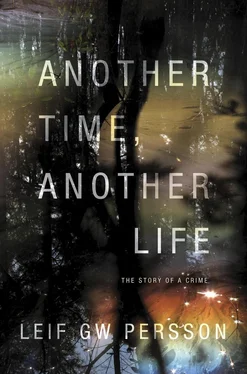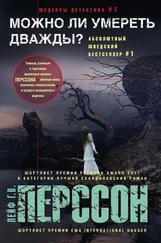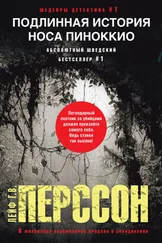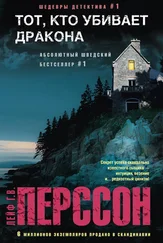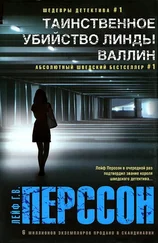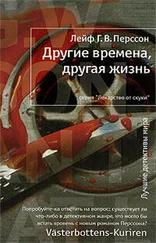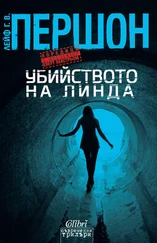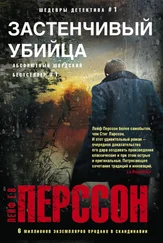“The East Germans fooled the pants off us,” Berg summarized, smiling and nodding to his guest. “Maybe it’s not so strange that they fooled a simple country boy like me,” he continued, smiling again. “But they actually fooled us all. The Americans, the English, the Israelis, the West Germans... they even fooled Herold, who knew them best, who had them closest to him, and who was probably the most talented person I’ve met in this business.”
Just imagine, thought Lars Martin Johansson, who himself was not to be played with and almost never fell for pretty words.
“Stasi registries,” he said. “Can you tell me about them?”
“Do you know about Operation Rosewood?” asked Berg, choosing to start with a question.
More or less, thought Johansson.
“It’s been described to me on two occasions,” Johansson replied. “So in broad terms I guess I do.” The problem was more that the descriptions he’d been given also diverged at various and not completely uninteresting points, he thought.
“Then you’ll get it a third time,” said Berg, nodding.
And this time of course it’ll be completely true, thought Johansson, but of course he didn’t say that.
“I’m listening.”
The relevant registry in this context comprised only a small portion of all the information that the Stasi had collected over more than forty years of operation; it concerned their foreign activities and was managed by the HVA, Hauptverwaltung Aufklärung. In concrete terms, in a purely archival sense, it was divided into forty different registries containing information about individuals, events, financial transactions, purchase of materials, and everything else that had to be organized to run, as HVA did, a large movement with espionage as its core activity and political terrorism as a secondary pursuit.
“What the Americans bought when they conducted Rosewood was simply a list of names,” said Berg. “It was the list of all of HVA’s foreign contacts. Everything from qualified spies to ordinary idiots one might have use for in certain situations. Plus names of a number of individuals who were used by their comrades in the Soviet Union and the Warsaw Pact and whom the Stasi had not used themselves but of whom they had nonetheless become aware, and therefore whose names they had chosen to record,” Berg clarified.
In total the deal had included more than forty thousand different names and almost thirty-five thousand different individuals; the discrepancy was explained by the fact that in this context some of the individuals were entered under several different names, code names and aliases. What the CIA had purchased was the names and nothing else, because if you wanted to figure out to what extent and in what manner a certain individual had contributed to HVA’s operation, you had to search further in other registries by means of the reference codes that were included with the list.
Yet the registries and archives being referenced were not part of the deal. As a consequence, among other things, certain epistemological problems cropped up, since the name of one of HVA’s most qualified spies might be listed right above or below someone who had only attended a party at an East German embassy and after having a little too much to drink said that he thought “Honecker was a damned amusing guy.” Provided that the spy’s surname was sufficiently similar to the partygoer’s, of course.
“Nonetheless,” said Berg judiciously, “the Rosewood registry became an indescribably powerful weapon, a fantastic basis for continued intelligence work... I’m willing to bet my professional reputation that Rosewood was the only straight deal that has ever been made with the information that was in Stasi’s registries.”
Over the years since the collapse in autumn 1989 a number of such deals had been made, most of them very small and very obscure. But Rosewood was by far the biggest, the first, the only straight deal that was made, and the best.
“What was procured at that time was gold,” said Berg. “Pure gold for people like us,” he added collegially, nodding at his successor.
Oh well, thought Johansson with the mixed feelings that easily followed from his not having had the time to get accustomed to who his new friends were. To whom did “us” refer?
Things were more complicated with the SIRA archive.
“System Information Recherche der Aufklärung,” said Berg in his impeccable German. “System for Information Search within the Espionage Service,” he translated prudently, because he was far from certain of how simple and rural his successor really was. It’s probably just that he looks that way, so I’ll have to hope he doesn’t take offense, thought Berg.
The SIRA archive held not only names of spies, collaborators, and ordinary fellow travelers, but also information about their various contributions. The problem was the reliability of the information. There were even highly placed evaluators in the Western security services who maintained that the entire SIRA archive was a gigantic swindle, an enormous disinformation campaign in which what was true in the material — and that was of course most of the information — was only included to grant credibility to what was not.
Berg did not share the latter opinion. That was “seeing ghosts in the light of day,” according to Berg. Who would the initiator behind the disinformation have been? he asked. Since the Eastern Bloc had fallen apart, there was simply no such entity left. At the same time there was a lot in the original SIRA archive that had been eliminated or changed. Quite certainly there was also fabricated information that had been added to the material, and the reasons were not particularly hard to understand.
When East Germany fell apart in late autumn of 1989, the more than a hundred thousand employees at the Stasi had no problem whatsoever keeping a straight face. The most common topic of conversation in the break room was how many years’ imprisonment one’s coworkers would get, and alone at home there was plenty of time to ask the same question on one’s own account. What could be found in the archive was of course not uninteresting in that context, and for once it was so fortuitous that their political employer had given them the responsibility to see to the destruction of the Stasi archives themselves.
Undoubtedly there were a good many opportunities both to improve their own individual legal situation and — for those employees who were more entrepreneurial — to earn a few bucks at others’ expense or even to garner a small profit by rescuing a fellow human being or two from impending misery. But there was a shortage of time. You didn’t need to be a political theorist to calculate that soon the enemy would have taken over the operation, and then it would be too late for either one thing or the other, and definitely too late for deal-making.
“According to information in the media,” Berg scrunched his long nose, “an employee at the Stasi archive — he has a different superior nowadays — right before Christmas 1998 is supposed to have succeeded in procuring extensive computer files that should have been destroyed after the Wall came down in 1989. And just a month before the new millennium this news became public knowledge.
“Of course this is pure nonsense, as you know,” said Berg. “It’s enough to visit an ordinary Swedish public library to understand how twisted such a story is. It doesn’t work that way. I don’t understand how these journalists think. Is he supposed to have stumbled across some box that was hidden away, perhaps way down in the cellar?”
What was called the SIRA archive in the media was material that was originally found in various Stasi registries that for various reasons had escaped being destroyed. The history of the archive was shrouded in darkness, and the only thing that could be said with certainty was that the data, in the form in which it was recovered, could not have existed as a separate archive or even as working data. It must have been compiled late in the game, perhaps even after the Wall came down. Hence, there were suspicions about its reliability. After it had been obtained, the deciphering and analysis of the data went on for several years before it was decided that it was time to “let the media get wind of the matter.”
Читать дальше
